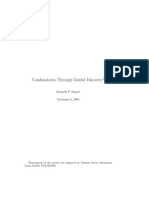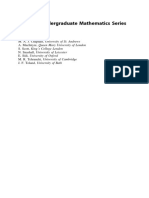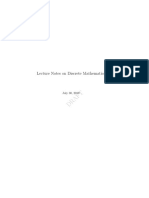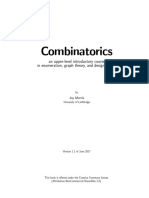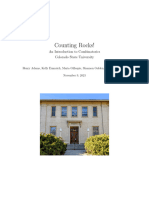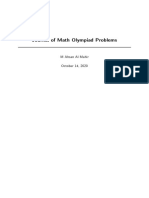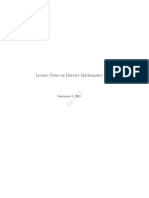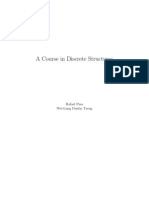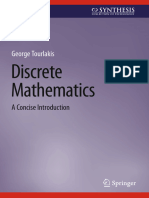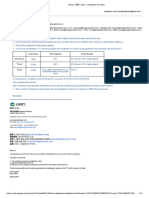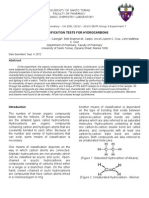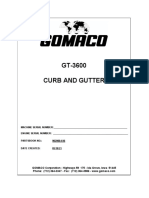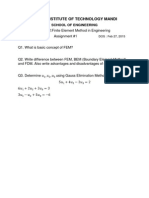0% found this document useful (0 votes)
88 views18 pagesCIS160 Mathematical Foundations of Computer Science Some Notes
The document provides notes on mathematical foundations of computer science, covering topics like mathematical reasoning, proof principles, logic, relations, functions, graphs, counting problems, partial orders, and equivalence relations. It presents examples and problems involving formulas for sums, bijections between geometric objects, counting derangements, finding strongly connected components in directed graphs, and more. The goal is to introduce fundamental mathematical concepts relevant to the study of computer science.
Uploaded by
rajeshdanCopyright
© Attribution Non-Commercial (BY-NC)
We take content rights seriously. If you suspect this is your content, claim it here.
Available Formats
Download as PDF, TXT or read online on Scribd
0% found this document useful (0 votes)
88 views18 pagesCIS160 Mathematical Foundations of Computer Science Some Notes
The document provides notes on mathematical foundations of computer science, covering topics like mathematical reasoning, proof principles, logic, relations, functions, graphs, counting problems, partial orders, and equivalence relations. It presents examples and problems involving formulas for sums, bijections between geometric objects, counting derangements, finding strongly connected components in directed graphs, and more. The goal is to introduce fundamental mathematical concepts relevant to the study of computer science.
Uploaded by
rajeshdanCopyright
© Attribution Non-Commercial (BY-NC)
We take content rights seriously. If you suspect this is your content, claim it here.
Available Formats
Download as PDF, TXT or read online on Scribd
/ 18

